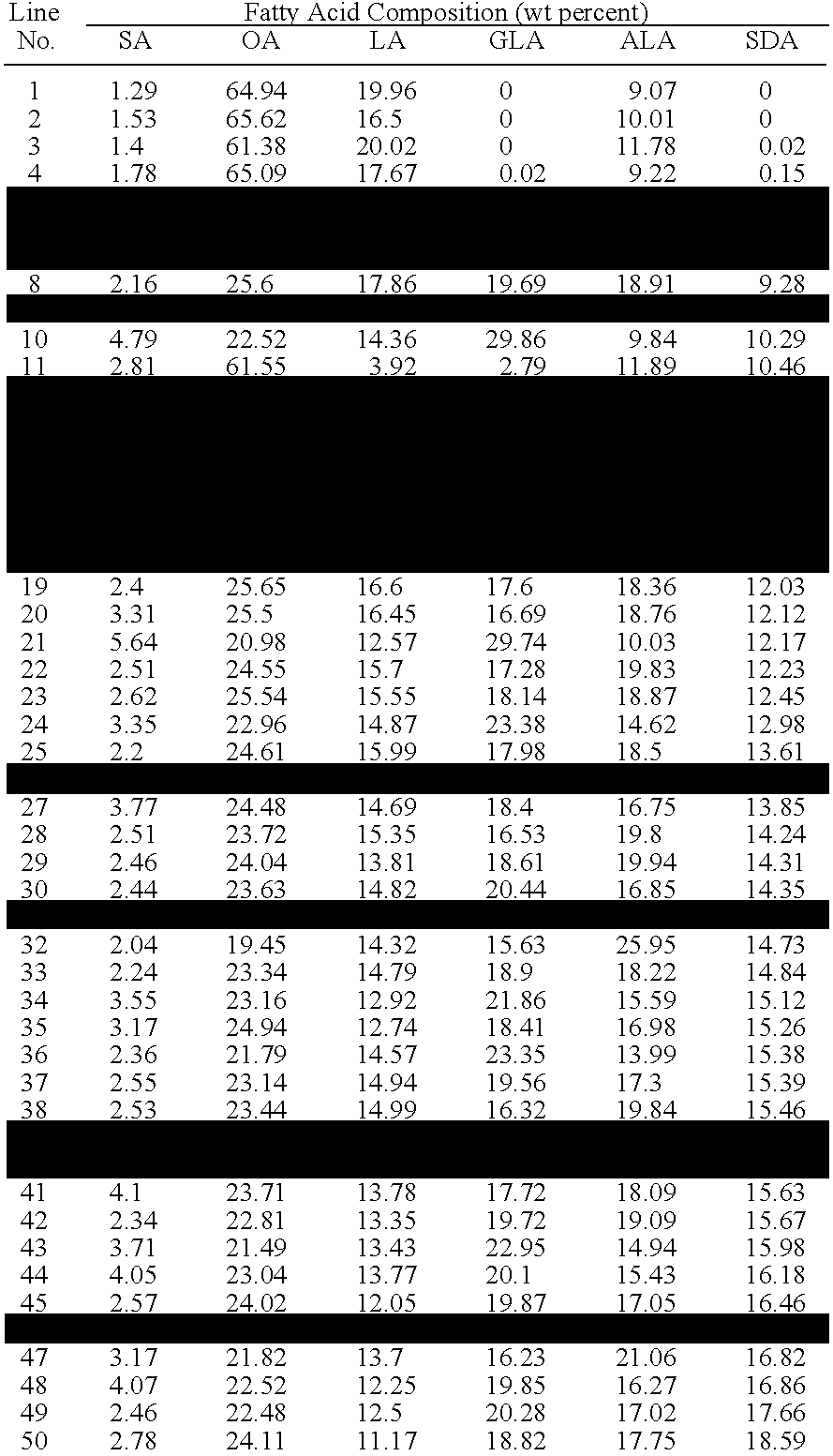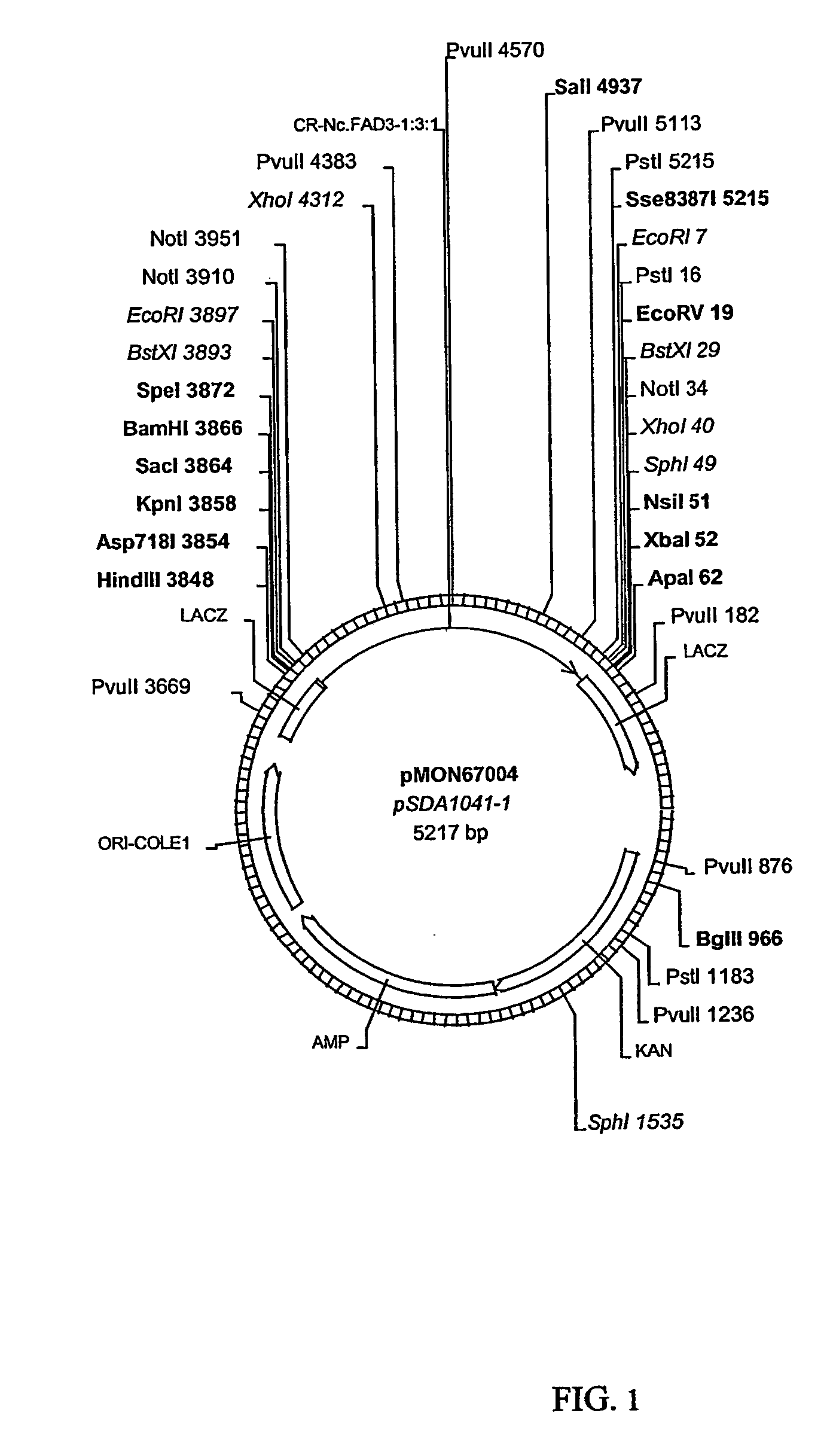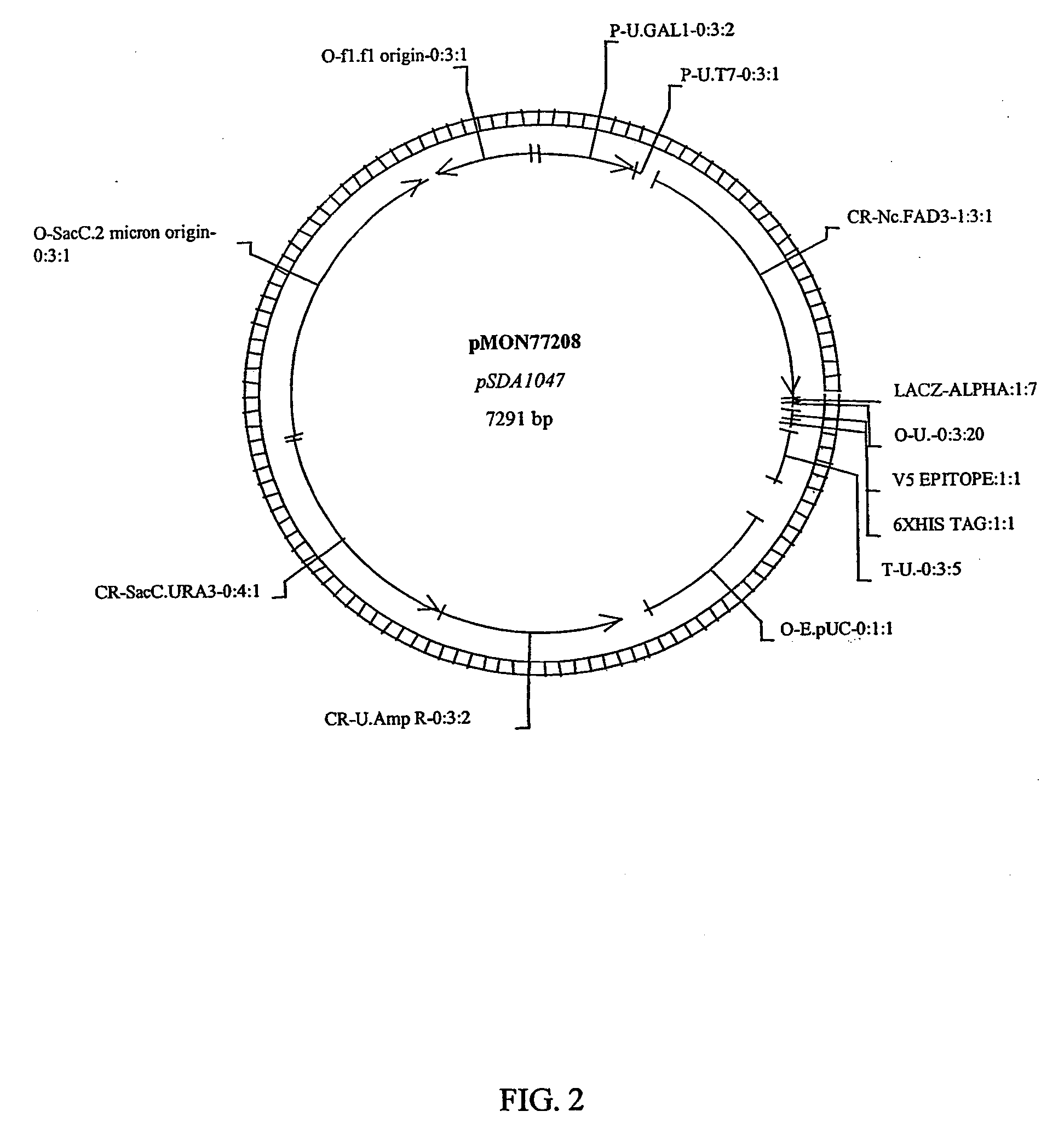Fatty acid desaturases from fungi
a technology of desaturases and fungi, which is applied in the field of desaturases from fungi, can solve the problems of unsatisfactory current availability of pufa, uncontrollable fluctuations in availability of natural sources of pufa, and depletion of fish stocks, so as to increase the nutritional value of an edible product, reduce the ratio of omega-6, and increase the sda content of an edible product
- Summary
- Abstract
- Description
- Claims
- Application Information
AI Technical Summary
Benefits of technology
Problems solved by technology
Method used
Image
Examples
example 1
Strains and Growth Conditions
[0102]Neurospora crassa mating type A and Aspergillus nidulans Glasgow wild type were obtained from the Fungal Genetics Stock Center. Cultures were grown in Vogel's medium N. (Case et al., Neurospora Newsletter, 8:25-26, 1965). Liquid cultures were inoculated with ascospores and grown for three days at 15°˜C. with shaking at 100 RPM. Mycelium was harvested by filtration in a Buchner funnel through Whatman number 1 paper and stored at 80° C. for RNA isolation or directly lyophilized for fatty acid composition determination by gas chromatography. The Saccharomyces cerevisiae strain used was INVSc1, a diploid strain that is auxotrophic for histidine, leucine, tryptophan, and uracil (Invitrogen). Cells were maintained on YPD media at 30° C.
example 2
Isolation of Fungal RNA
[0103] Total RNA was isolated from fungal mycelium of the 3 strains described in Example 1 using the acid guanidinium-phenol-chloroform method of Chomczynski and Sacchi, (1987, Tri-Reagent, SIGMA). This method provides 500 mg of mycelium being ground in liquid nitrogen then added to 7 ml of Tri-Reagent. Chloroform was added to separate the aqueous phase from the organic phase. The RNA was precipitated with isopropanol then washed with 70% ethanol before being resuspended in deionized water.
example 3
Cloning of the N. crassa Δ12 and Δ15-Desaturase Sequences
[0104] Based on sequence comparisons to the N. crassa genomic sequences, gene specific primers were designed to amplify the full-length coding regions of the putative Δ12-desaturase (Nc111F2 and Nc111R3) and the putative Δ15-desaturase (Nc94F6 and Nc94R8). Forward primers were designed to include three nucleotides 5′ of the start Met site
(SEQ ID NO:15)Nc111F2: 5′-AAGATGGCGTCCGTCTCCTCTGCCCTTCCC-3′(SEQ ID NO:16)Nc111R3: 5′-TTAGTTGGTTTTGGGGAGCTTGGCAGGCTTG-3′(SEQ ID NO:17)Nc94F6: 5′-GCGGCCGCAACATGACGGTCACCACCCGCAGCCA-3′.
[0105] The NotI site added to the 5′ end of the oligonucleotide is italicized.
(SEQ ID NO:18)Nc94R8: 5′-CCTGCAGGTTACTGGGTGCTCTGAACGGTGTGCG-3′.
The Sse83871 site added to the 5′ end of the oligonucleotide is italicized.
[0106] The cDNA for N. crassa was prepared using the Marathon cDNA Amplification kit (Clontech Laboratories). These primers were used with 3′-RACE ready cDNA to amplify putative desaturases using...
PUM
| Property | Measurement | Unit |
|---|---|---|
| Melting Temperature | aaaaa | aaaaa |
| pH | aaaaa | aaaaa |
| nucleic acid | aaaaa | aaaaa |
Abstract
Description
Claims
Application Information
 Login to View More
Login to View More - R&D
- Intellectual Property
- Life Sciences
- Materials
- Tech Scout
- Unparalleled Data Quality
- Higher Quality Content
- 60% Fewer Hallucinations
Browse by: Latest US Patents, China's latest patents, Technical Efficacy Thesaurus, Application Domain, Technology Topic, Popular Technical Reports.
© 2025 PatSnap. All rights reserved.Legal|Privacy policy|Modern Slavery Act Transparency Statement|Sitemap|About US| Contact US: help@patsnap.com



